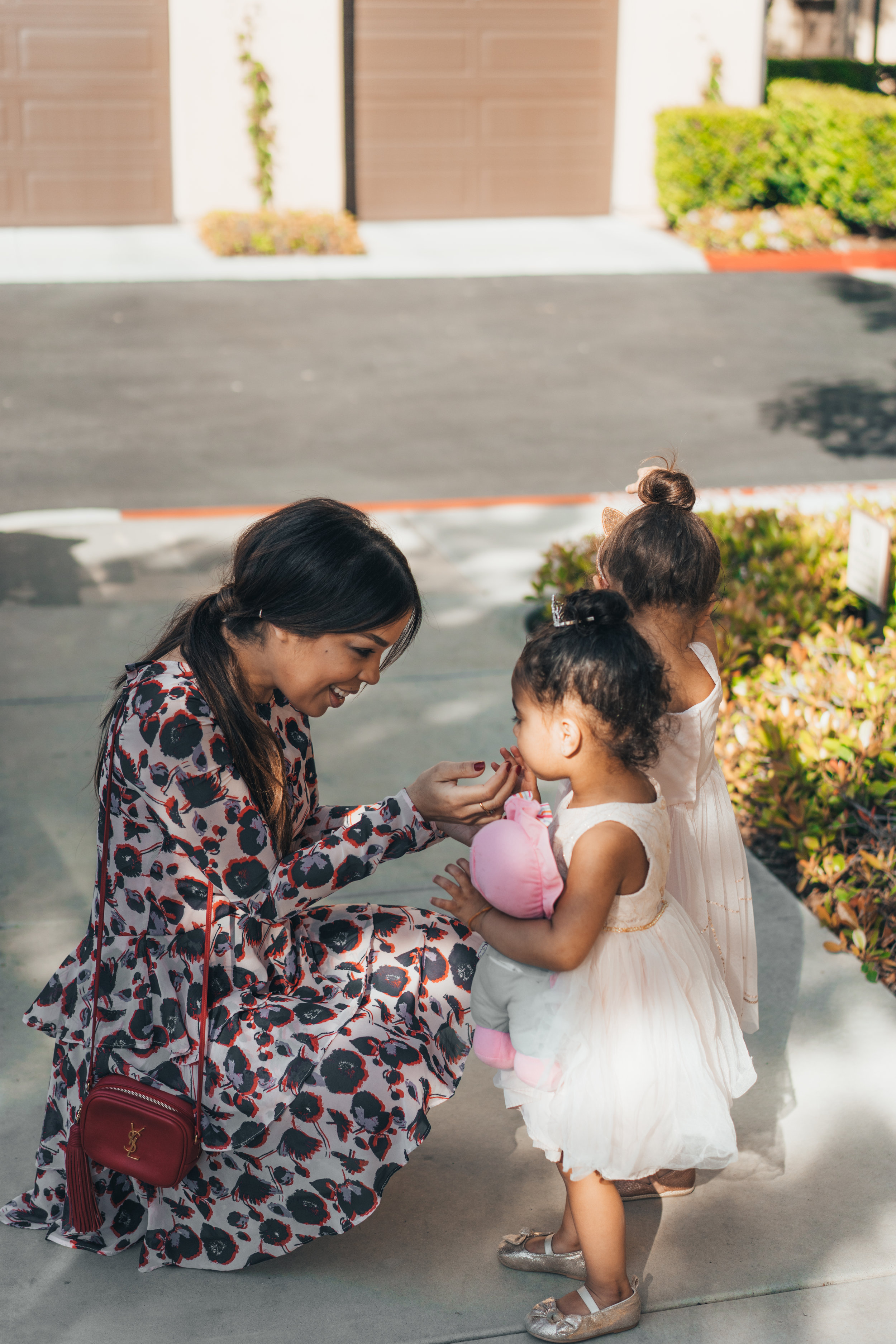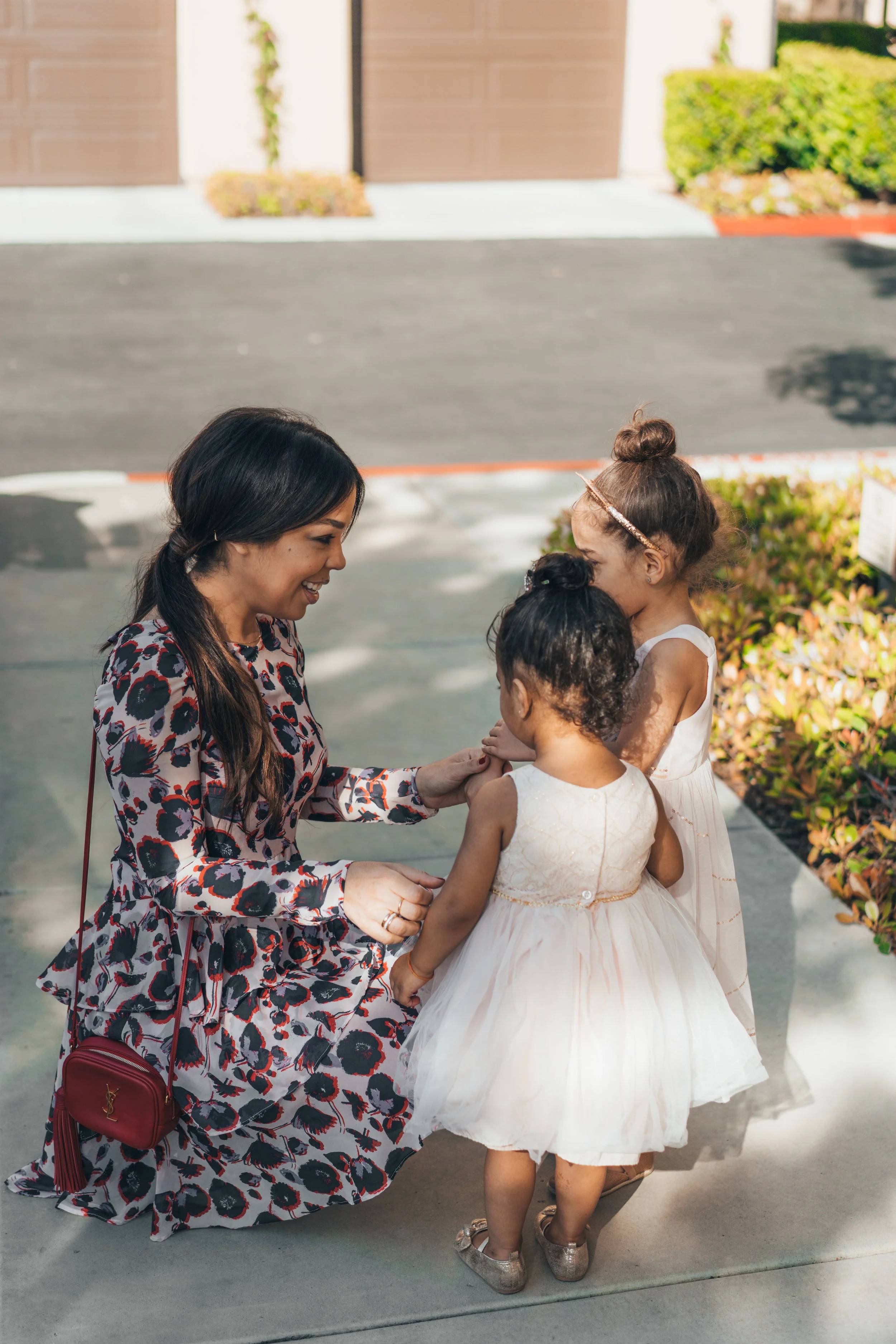etiquette and protocol

We live in a society where every day we forget more and more the rules of etiquette and protocol. We don’t speak about this topic! In my home growing up, it was always something very important. My mom took this very seriously. You don’t have to be royalty to cultivate this at home in your children.
Children tend to be faithful reflections of what they see at home in terms of behavior and manners, most especially during the first years when they don’t count with many other social interactions but their parents’ (they are not yet in school or daycare). From that very moment, we need to be careful with our own behavior, our language, our example. Do not forget that they are sponges and what you show them is what they will learn.
I wanted to recount the basic rules that I was shown at home and others that I will practice with my girls when they are older...
BASIC RULES
It is important to always say “Hello” or greet people when we visit them. We should not play with drawers, touch objects around their home, open the fridge or jump on couches of the people who receive you.
Role Play
We should prepare for the different situations in which your children will need to be well-mannered. To know how to do it well, one of the best ways is to show them through role play. At home you can practice imaginary scenes and settings that they will go through later in real life, such as, how to greet people, what to say to initiate a conversation, how to behave at the supermarket, when to say sorry, etc.
Start with the easy stuff
For 2-year-olds you can already begin by teaching them how to say “please” and “thank you” (the most important), and continue with “sorry”. It is still too early at this age to show them proper protocol for communicating on the phone or “nice to meet you” or “you’ve been very kind”.
Be Consistent.
Manners and good behavior are not only for when you have company or outings. They should be a part of your daily routine.
Eating or Dinner as a Family
Families that eat together are families that will be more united and happy. They are the perfect moments to practice manners, aside from the opportunity of communication. You can learn to set the tables, chew correctly, have a good conversation, etc.
Conversations Between Adults
You should teach that to participate in a conversation where you have not been invited or included you must say "excuse me" or "pardon me". You DO NOT opinionate or intrude when adults are talking.
Rules At the Table
Teach your child which topics should not be discussed at the table. For example, you don't talk about things that may be gross.
The napkin goes on your lap, not hanging from your neck.
We do not touch food on plates. Once he/she touches it, it no longer belongs to you.
Soup, no matter how yummy it is, is not eaten rushed by tipping the plate until you drink the last drop. And no matter how hot the soup is, you do not blow on the plate or spoon to cool them.
Food should be chewed with your mouth closed, without making noises and you should not speak with your mouth full.
Show your little ones to never lick their fingers or clean their teeth with their tongue or fingernails.
Estamos en una sociedad que cada día más olvida las reglas de etiqueta y protocolo. En mi hogar esto siempre fue importante, mi mama se tomó muy en serio esta parte.
Los niños suelen ser un fiel reflejo de lo que ven en casa en cuanto a comportamiento y modales; sobre todo en los primeros años que apenas cuentan con otro contacto social que el de sus padres (pues no van al colegio o la guardería). Desde ese preciso instante debemos tener cuidado con nuestro comportamiento, con nuestro lenguaje, con nuestros gestos, nuestro ejemplo. No olvides que ellos son pequeñas esponjas y lo que le enseñes eso aprenderán.
Quise hacer un recuento de reglas básicas que enseñó en mi hogar y otras que pondré en acción cuando estén más grandesitas.
Reglas Básicas
Es importante que cuando visitemos una casa El Niño sepa que hay que saludar, no se tocan las gavetas, objetos de la casa, no se abre la nevera, o se brinca en los muebles de la persona que te recibe.
Los juegos de roles
Hay que prepararse para las diversas situaciones en las que tus hijos necesitan mostrar sus buenos modales. Para que sepan hacerlo bien una forma de conseguirlo es hacerlo a través de los juegos de roles, así ya tendrán la práctica con ellos. En casa, puedes practicar en escenarios imaginarios diferentes situaciones que después le ocurrirá en la vida real como por ejemplo cómo saludar a las personas, qué decir para iniciar una conversación, el comportamiento en el supermercado, cuando tiene que pedir perdón, etc.
Comienza por lo fácil
Para los niños de 2 años ya puedes comenzar con , "por favor" y "gracias" son lo más importante; después, agrega "disculpa." Aún falta mucho para enseñarle el protocolo para las comunicaciones telefónicas, el "gusto en conocerte" “ a sido muy amable”
Sé coherente.
Los modales y el buen comportamiento no solo son para cuando estás en compañía o para salir a comer. Deben ser parte de tu rutina diaria.
Comer o cenar en familia
Las familias que comen o cenan juntas serán una familia más unida, feliz y cohesionada. Son situaciones perfectas para practicar los buenos modales -además de la comunicación-. Se puede aprender a colocar la mesa, a masticar correctamente, a tener una buena conversación, etc.
Conversaciones entre adultos
Enseñarles que para entrar a una conversación que no estás invitado siempre di permiso o disculpa. Y que No se opina cuando los adultos hablan.
Reglas en la mesa
Enséñale a tu pequeño los temas que no se hablan en la mesa; como por ejemplo no se habla de cosas que puedan causar asco.
La servilleta, en el regazo, no colgando del cuello.
Los alimentos no se tocan, y si se tocan ya le pertenecen a tu pequeño o a ti.
Las sopas, por buenas que estén, no se apuran inclinando el plato para tomarse la última gota. Ah, y por calientes que estén, no se sopla el plato ni la cuchara para enfriarlas.
La comida debe masticarse con la boca cerrada, sin hacer ruidos y sin hablar al mismo tiempo
Enséñale a tus chiquitos a Nunca chuparse los dedos, ni que se limpie los dientes con la lengua o las uñas




